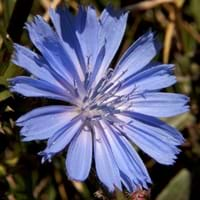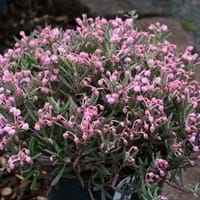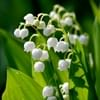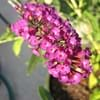Life Span
Perennial
Annual and Perennial
Type
Flowering Plants, Shrubs, Vegetable
Broadleaf Evergreen
Origin
Mediterranean
North America, Europe, Asia
Types
Belgian Endive, Red Belgian Endive, Curly Endive (a.k.a. Frisee), Escarole, Radicchio (Chioggia) and Radicchio (Chioggia)
Andromeda polifolia var. polifolia, Andromeda polifolia var. glaucophylla
Habitat
Grassland, Mediterranean region, Wild
Bog Garden, Fens, Swamps
USDA Hardiness Zone
3-9
2-6
AHS Heat Zone
9-1
Not Available
Sunset Zone
A1, A2, A3, H1, H2, 1a, 1b, 2a, 2b, 3a, 3b, 4, 5, 6, 7, 8, 9, 10, 11, 12, 13, 14, 15, 16, 17, 18, 19, 20, 21, 22, 23, 24
Not Available
Habit
Clump-Forming
Cushion/Mound-forming
Flower Color
Blue
White, Pink, Light Pink
Flower Color Modifier
Not Applicable
Not Available
Fruit Color
Brown
Not Available
Leaf Color in Spring
Green
Gray Green
Leaf Color in Summer
Green
Gray Green
Leaf Color in Fall
Green
Gray Green
Leaf Color in Winter
Green
Gray Green
Leaf Shape
Oblong
Long Linear
Plant Season
Summer
Spring, Summer, Fall, Winter
Sunlight
Full Sun, Part sun
Full Sun, Partial Sun, Partial shade
Type of Soil
Loamy, Sandy
Loam
The pH of Soil
Acidic, Alkaline, Neutral
Acidic
Soil Drainage
Well drained
Average
Bloom Time
Summer
Late Spring, Early Summer
Tolerances
Not Available
Not Available
Where to Plant?
Ground
Container, Ground
How to Plant?
Seedlings
Seedlings
Plant Maintenance
Medium
Medium
Watering Requirements
Keep the ground moist but not water-logged, Prefer drip-irrigation instead of Over-head watering, Requires regular watering, Requires watering in the growing season
Do not let dry out between waterings, Keep ground moist
In Summer
Lots of watering
Average Water, Ample Water
In Spring
Moderate
Ample Water
In Winter
Average Water
Not so frequently
Soil pH
Acidic, Alkaline, Neutral
Acidic
Soil Type
Loamy, Sandy
Loam
Soil Drainage Capacity
Well drained
Average
Sun Exposure
Full Sun, Part sun
Full Sun, Partial Sun, Partial shade
Pruning
Cut or pinch the stems, Prune prior to new growth, Prune to stimulate growth, Remove dead or diseased plant parts, Remove deadheads
Prune for size control, Remove short twigs
Fertilizers
All-Purpose Liquid Fertilizer
fertilize in spring
Pests and Diseases
Aphids, Loopers, Root rot, Viruses, Worms
No serious insect or disease problems
Plant Tolerance
Drought
Not Available
Flower Petal Number
Not Available
Single
Foliage Texture
Medium
Fine
Foliage Sheen
Matte
Matte
Attracts
Butterflies
pollinators
Allergy
Not Available
Not Available
Aesthetic Uses
Not Used For Aesthetic Purpose
Showy Purposes
Beauty Benefits
Not Available
Not Available
Environmental Uses
Air purification
Not Available
Medicinal Uses
Cancer, Digestive disorders, Inflammation, Liver problems, Stomach pain
Not Available
Part of Plant Used
Leaves, Root
Flowers
Other Uses
Used as an ingredient in coffee
As a tea substitute
Used As Indoor Plant
No
No
Used As Outdoor Plant
Yes
Yes
Garden Design
Not Available
Bog Garden, Container, Mixed Border, Rock Garden, Wall
Botanical Name
Cichorium intybus
ANDROMEDA polifolia
Common Name
Blue daisy, blue dandelion, blue sailors, blue weed, bunk, coffeeweed, cornflower, hendibeh, horseweed, ragged sailors, succory, wild bachelor's buttons, and wild endive
Bog Rosemary
In Hindi
कासनी
Bog Rosemary
In German
Chicoree
Rosmarinheide
In French
chicorée
Andromeda polifolia
In Spanish
achicoria
Andromeda polifolia
In Greek
ραδίκι
Bog Rosemary
In Portuguese
chicória
Bog Rosemary
In Polish
cykoria
Modrzewnica zwyczajna
In Latin
pancratium
Bog Rosemary
Phylum
Magnoliophyta
Magnoliophyta
Class
Magnoliopsida
Magnoliopsida
Family
Asteraceae
Ericaceae
Genus
Cichorium
Andromeda
Clade
Angiosperms, Asterids, Eudicots
Angiosperms, Asterids, Eudicots
Tribe
Cichorieae
Not Available
Subfamily
Cichorioideae
Vaccinioideae
Number of Species
Not Available
Season and Care of Chicory and Bog Rosemary
Season and care of Chicory and Bog Rosemary is important to know. While considering everything about Chicory and Bog Rosemary Care, growing season is an essential factor. Chicory season is Summer and Bog Rosemary season is Summer. The type of soil for Chicory is Loamy, Sandy and for Bog Rosemary is Loam while the PH of soil for Chicory is Acidic, Alkaline, Neutral and for Bog Rosemary is Acidic.
Chicory and Bog Rosemary Physical Information
Chicory and Bog Rosemary physical information is very important for comparison. Chicory height is 3.00 cm and width 1.50 cm whereas Bog Rosemary height is 33.00 cm and width 46.00 cm. The color specification of Chicory and Bog Rosemary are as follows:
Chicory flower color: Blue
Chicory leaf color: Green
Bog Rosemary flower color: White, Pink and Light Pink
- Bog Rosemary leaf color: Gray Green
Care of Chicory and Bog Rosemary
Care of Chicory and Bog Rosemary include pruning, fertilizers, watering etc. Chicory pruning is done Cut or pinch the stems, Prune prior to new growth, Prune to stimulate growth, Remove dead or diseased plant parts and Remove deadheads and Bog Rosemary pruning is done Prune for size control and Remove short twigs. In summer Chicory needs Lots of watering and in winter, it needs Average Water. Whereas, in summer Bog Rosemary needs Average Water, Ample Water and in winter, it needs Not so frequently.





